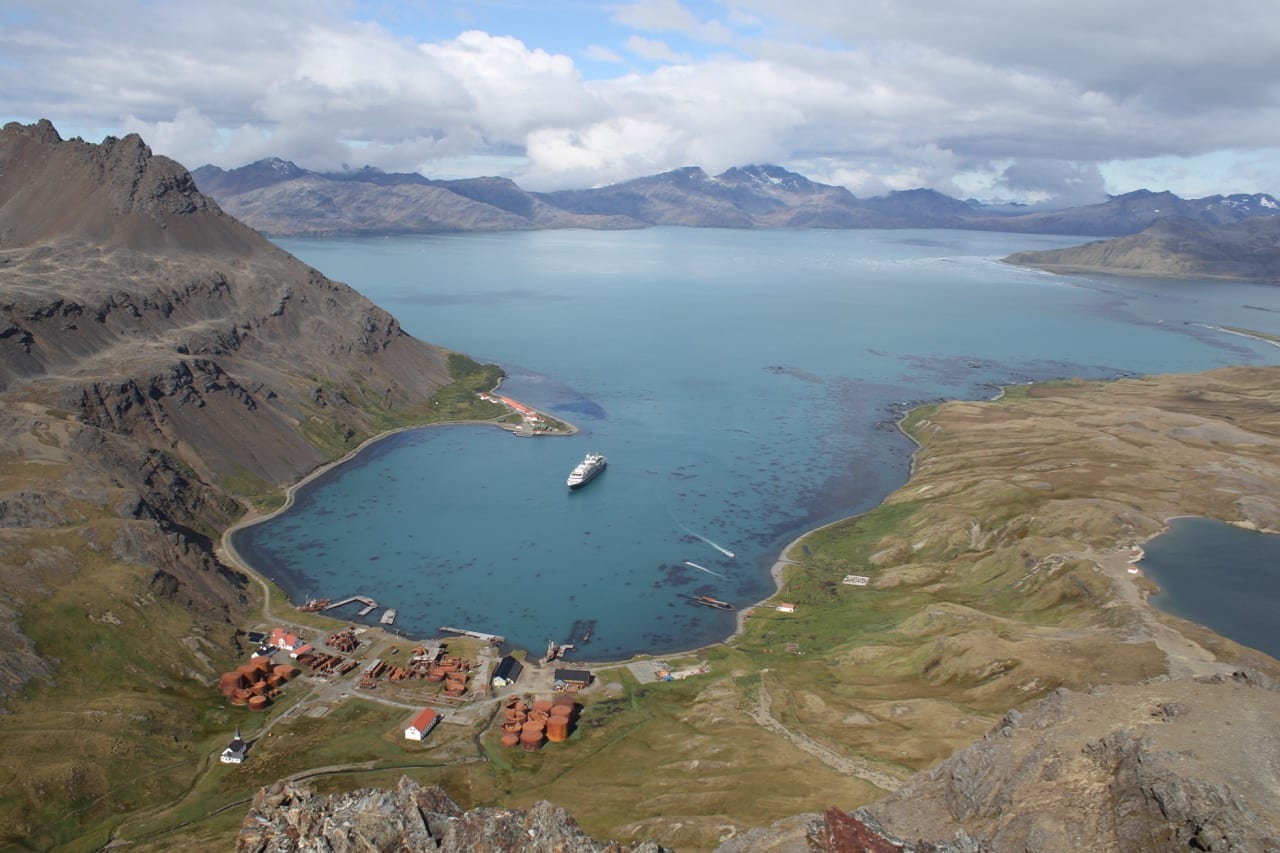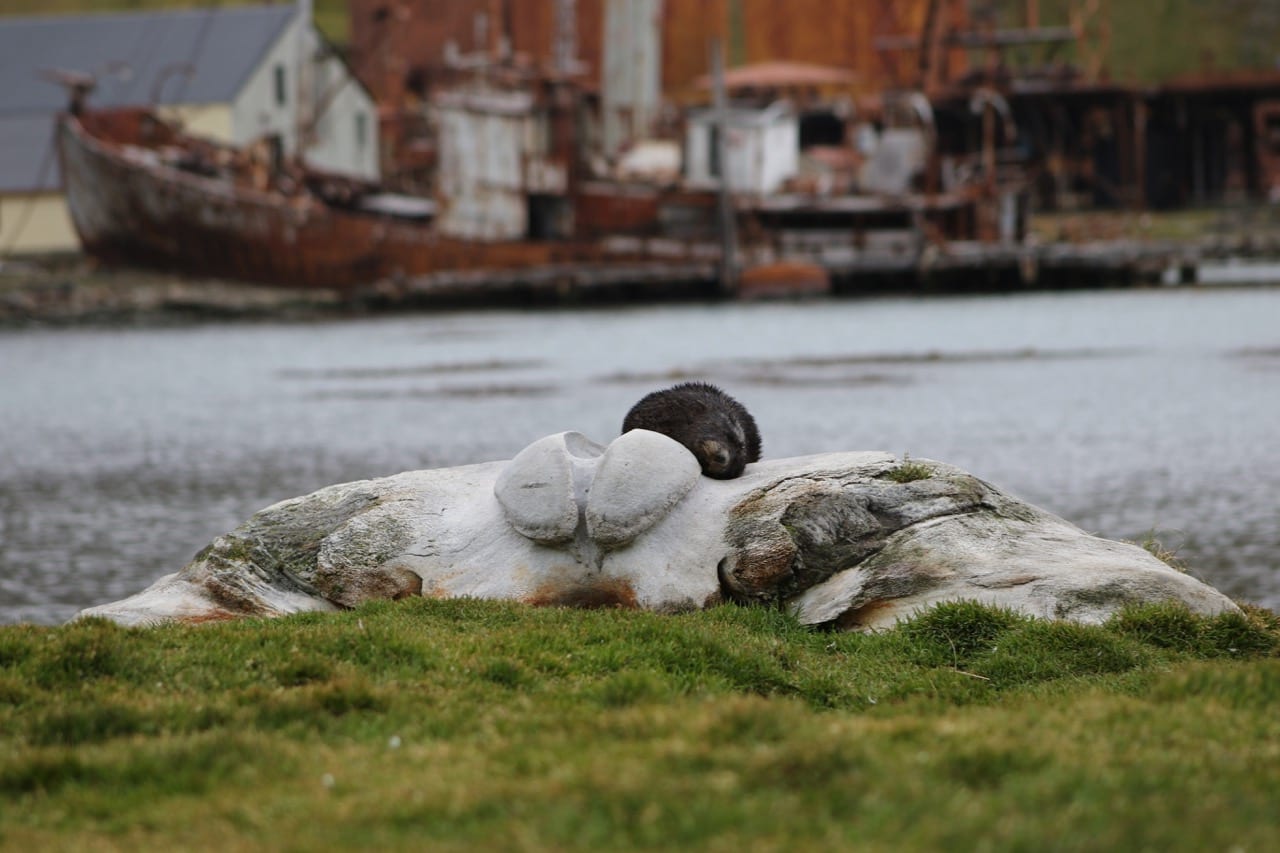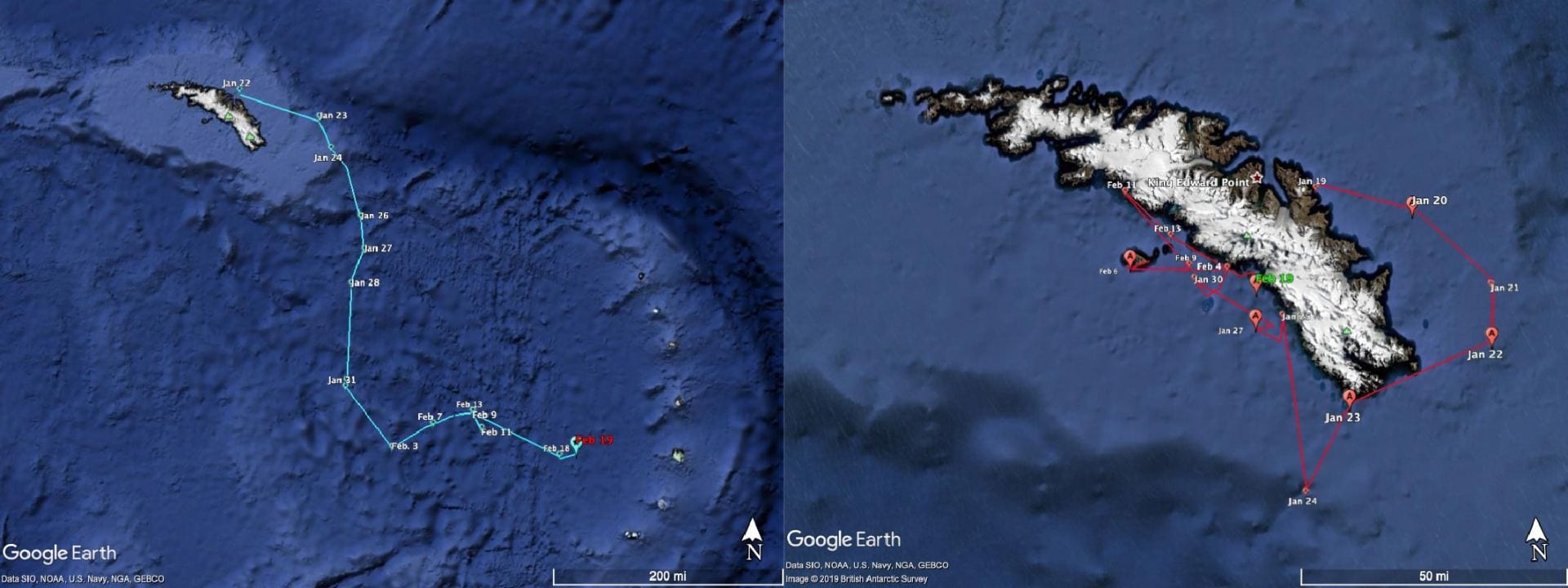South Georgia’s first whaling station
The past is very present in South Georgia. The Southern Hemisphere’s first industrial whaling station sits in Grytviken. The rusting red interior of the former processing plant, stripped of their asbestos filled outer shell, once processed dozens of whales per day. It was one of six land based and 13 floating whaling stations that once operated in South Georgia, which combined killed over 175,000 whales within a day’s sail of the island. The South Georgia Museum has done an amazing job preserving the artefacts from the village that used to be Grytviken and providing visitors with the historical context of the remaining structures.

Relics from the early whaling era
Whales bones are also a constant reminder of the past. When the whaling station first operated in Grytviken in 1904, only the whale’s blubber was used and King Edward Cove became full of rotting carcasses. A law passed around 1920 meant that the whole of each whale killed had to be used. The bones, blubber and meat were all then processed, leaving nothing behind. This means that the bones left scattering the shores of South Georgia come from a definitive time period. Some of them are big: the photo below shows a whale skull with a fur seal pup asleep on it near the Grytviken shoreline.

Combining old and new to understand South Georgia’s recovering whale populations
Researchers from the British Antarctic Survey (BAS) and Oregon State University (OSU) are using the 100-year old bones to understand how whale populations have changed in the century since whaling. The bones yield both DNA and micro-chemical markers called stable isotopes. The DNA gives an understanding of how the South Atlantic and South Pacific were connected at the onset of the whaling era. The stable isotopes reflect where and what the whales were eating 100 years ago, providing insight into their position in the food chain. Skin samples from whales living today, collected using minimally invasive remote biopsy systems, provides a present-day contrast to this information. Angie Sremba and Scott Baker from OSU have looked at changes in genetic diversity and connectivity of blue whales around South Georgia since the whaling era. Now, Jen Jackson from BAS is applying similar methods to assess how fin and humpback whale populations have changed over the past century. The data from our two satellite tagged humpback whales will also provide insight into how that species use South Georgia today – although as you can see from the tracks below, whales can have quite different journeys around the region.

Help fund our research!
To donate please visit here!